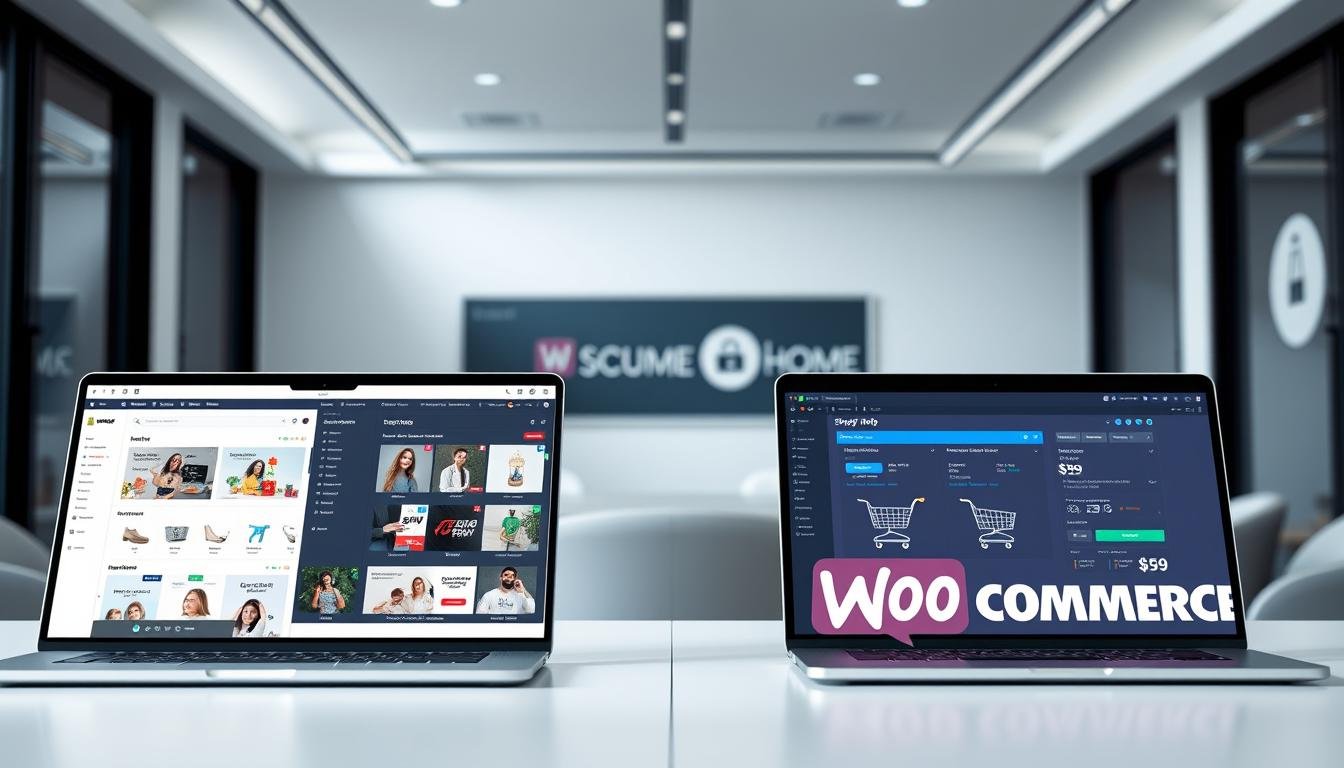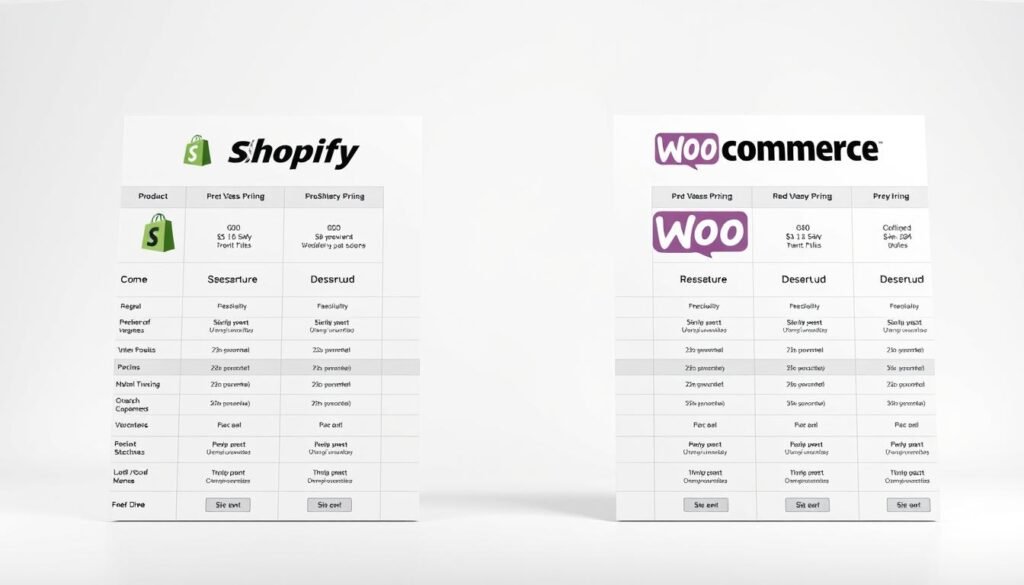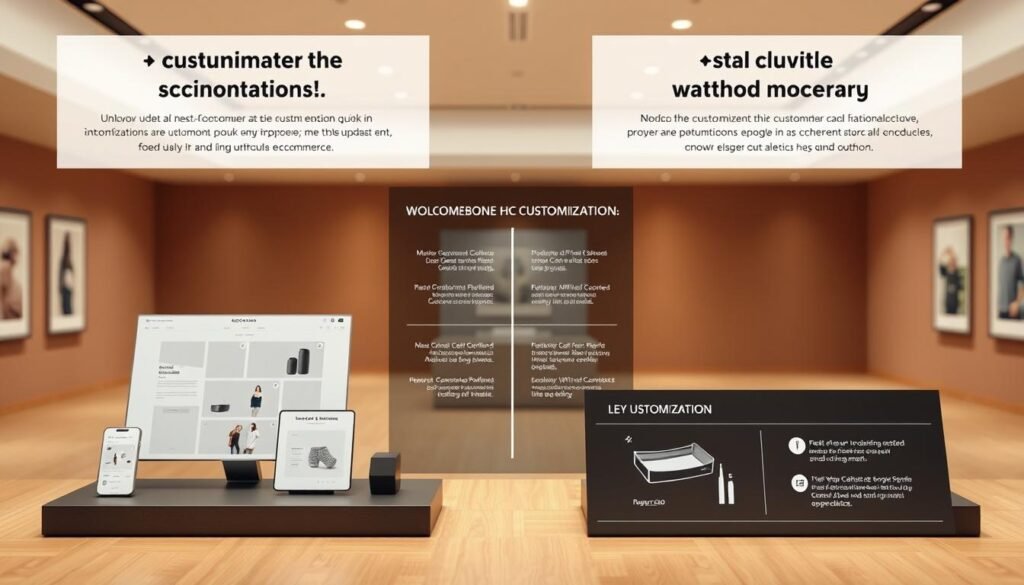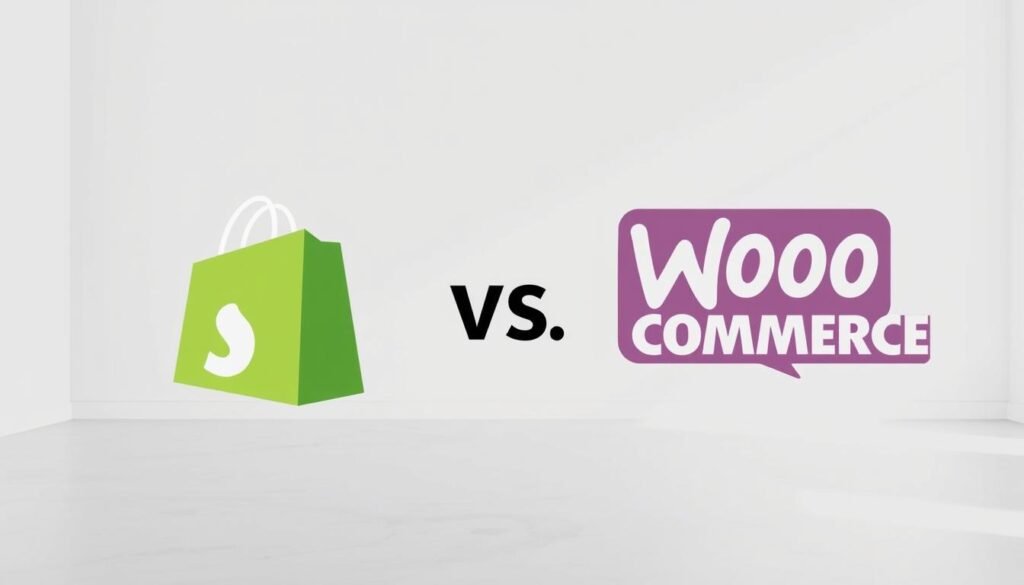Address
304 North Cardinal
St. Dorchester Center, MA 02124
Work Hours
Monday to Friday: 7AM - 7PM
Weekend: 10AM - 5PM
Address
304 North Cardinal
St. Dorchester Center, MA 02124
Work Hours
Monday to Friday: 7AM - 7PM
Weekend: 10AM - 5PM

Are you torn between Shopify and WooCommerce for your UK online store? Picking the right e-commerce platform is key to your business’s success.
There are many options out there. It’s vital to look at the features, costs, and how easy they are to use. This will help you find the best platform for ecommerce businesses like yours.
This detailed comparison aims to give you the insights you need. It will help you make a choice that fits your business perfectly.
Choosing between Shopify and WooCommerce depends on their unique features and uses. It’s key to know the main differences to pick the right one for your business.
Shopify is a complete e-commerce solution. It lets businesses create, manage, and design their online stores easily. It has a simple interface, many themes, and features for all kinds of businesses.
You can handle products, payments, and shipping all in one place with Shopify.
WooCommerce is a WordPress plugin that turns a site into an e-commerce store. It’s great for those who know WordPress or want more control. WooCommerce is flexible and has many extensions to boost its features.
Shopify is best for new e-commerce businesses or those who want an easy setup. WooCommerce is ideal for WordPress users or those needing more customization.
When deciding between Shopify and WooCommerce, think about your business needs and goals. Knowing what each platform offers will help you choose the best for your e-commerce strategy.
To find the best e-commerce platform for you, it’s key to look at Shopify and WooCommerce’s main features. Both offer tools and functions to boost your online store’s performance.
Shopify and WooCommerce both have strong e-commerce features. These include managing products, tracking orders, and handling inventory. Yet, they differ in how these features are set up.
Customizing your online store is key to making it unique. Shopify and WooCommerce offer different customization options.
Payment gateways are vital for handling transactions on your e-commerce site. Both Shopify and WooCommerce support various payment gateways.
Knowing these key features will help you decide between Shopify and WooCommerce for your e-commerce needs.
Choosing between Shopify and WooCommerce means looking at their prices. Each platform has its own costs that can impact your business’s finances.
Shopify has a monthly plan with three levels: Basic Shopify, Shopify, and Advanced Shopify. Each level has different features and support, priced from £25 to £299 a month. Shopify also charges a fee on sales, except when you use Shopify Payments.
WooCommerce is free but costs can add up. You’ll need to think about:
WooCommerce lets you manage your spending based on your business’s needs.

It’s important to calculate the total cost for both Shopify and WooCommerce. For Shopify, this includes the monthly fee, transaction fees, and app costs. For WooCommerce, think about hosting, theme, and extension costs, plus any developer fees for custom work.
Comparing these costs helps you see which platform is more cost-effective. Look at:
By considering these points, you can choose the best option for your budget and business needs.
Choosing between Shopify and WooCommerce for your online store is all about ease of use. Both platforms have their good and bad sides. These can greatly affect how well you manage your store and its success.
The first thing you’ll see when setting up your store is the user interface. Shopify is known for being easy to use and simple. It lets users manage their stores without needing to know a lot of tech stuff. On the other hand, WooCommerce, being a WordPress plugin, has a more complex interface. It’s very customizable but might be harder to learn, especially for those new to WordPress.
The learning curve is a big factor. Shopify is easy to learn and set up, making it great for new e-commerce users. WooCommerce, however, takes more time to get used to, especially for those not familiar with WordPress. But, WooCommerce’s flexibility and customization options might be worth the extra effort for some.
Good customer support is key for quick issue solving and a smooth-running store. Shopify provides 24/7 support through live chat, email, and phone. WooCommerce, being open-source, relies on community support and documentation. You can also buy support services from approved WooCommerce providers.
| Feature | Shopify | WooCommerce |
|---|---|---|
| User Interface | Intuitive and streamlined | Complex and customizable |
| Learning Curve | Easy to learn | Steeper learning curve |
| Customer Support | 24/7 support via multiple channels | Community support and optional paid support |
Choosing between Shopify and WooCommerce depends on what you need. If you want something easy to use and hassle-free, Shopify might be best. But, if you prefer a customizable solution and are okay with WordPress, WooCommerce could be the way to go.
Flexibility and customization are key for your ecommerce business. Shopify and WooCommerce stand out in these areas. Knowing what each offers is vital for a unique online store.
Shopify has many professionally designed themes. These are fully responsive and customizable. You can pick from free and paid themes in the Shopify Theme Store.
WooCommerce uses WordPress’s vast theme repository. This gives you thousands of themes, both free and paid.
Shopify’s theme options are easy to use. They let you change your store’s look and feel without coding. WooCommerce themes require more technical skills but offer deep customization through the WordPress Customizer.

Shopify’s app store is vast, offering many integrations. These can add features like marketing and sales tools, and shipping and inventory management.
WooCommerce, part of the WordPress ecosystem, has a huge plugin library. It covers everything from SEO tools to payment gateways and customer service enhancements.
For those who can code, access to the code is crucial. Shopify lets you edit HTML/CSS and JavaScript. This gives you control over your store’s design and functionality. But, making big changes can be hard and needs a developer.
WooCommerce, built on WordPress, offers full code access. You can modify core files, plugins, and themes directly. This is great for those who know coding, allowing for deep customizations.
In conclusion, both Shopify and WooCommerce are flexible and customizable. Your choice depends on your needs, skills, and how much you want to customize your ecommerce business.
E-commerce security is key, and knowing the security differences between Shopify and WooCommerce is vital. Both platforms offer ways to protect your online store. But, they have different methods.
Shopify offers a secure, hosted environment with strong security features. It ensures your customers’ payment info is safe. Shopify also handles security updates and compliance, so you can focus on your business.
Shopify’s security features include:
WooCommerce, a self-hosted solution on WordPress, needs your own security efforts. This gives you control but makes you responsible for your site’s security.
To keep your WooCommerce store safe, follow these steps:
A comparison of Shopify and WooCommerce’s security features is shown in the table below:
| Security Feature | Shopify | WooCommerce |
|---|---|---|
| PCI DSS Compliance | Built-in | Requires setup |
| Automatic Security Updates | Yes | No |
| SSL Encryption | Yes | Yes, with setup |
The choice between Shopify and WooCommerce depends on your security needs. Shopify is great for a hassle-free, secure environment. But, if you like managing your own security, WooCommerce might be better.
In the world of e-commerce, knowing about SEO is key. It helps your online store show up in searches. This is important for attracting customers.
Shopify has built-in SEO tools to help you optimise your site. These include:
Shopify makes SEO easy for those who aren’t tech-savvy. But, it doesn’t offer as much customisation as other platforms.

WooCommerce uses WordPress’s strong SEO tools. It works well with SEO plugins like Yoast SEO and All in One SEO Pack. These plugins offer:
WooCommerce and WordPress plugins offer a lot of customisation. But, you need some technical skills or a willingness to learn.
| SEO Feature | Shopify | WooCommerce |
|---|---|---|
| Built-in SEO Features | Yes, includes automatic generation of meta tags and customisable URLs | No built-in features; relies on WordPress SEO capabilities and plugins |
| Customisation Level | Limited; streamlined for ease of use | High; extensive customisation through WordPress SEO plugins |
| Technical Expertise Required | Low; user-friendly interface | Moderate to High; depends on the complexity of SEO tasks and plugins used |
Choosing between Shopify and WooCommerce for SEO depends on your needs. Shopify is great for ease and a simple SEO process. WooCommerce offers more flexibility and customisation, but requires more technical knowledge.
As your e-commerce business grows, the performance and scalability of your platform become key. A good platform ensures your customers have a smooth shopping experience, no matter the traffic.
The speed and load times of your e-commerce site are crucial. Slow pages can cause high bounce rates and lost sales.
Shopify’s hosted solution is optimized for speed, with fast load times and handling big traffic. Shopify takes care of the technical hosting, like server maintenance and optimization.
WooCommerce, however, depends on the hosting and the site owner’s efforts. While it gives more control, performance depends on hosting quality and optimization.

Choosing an e-commerce platform means thinking about growth and traffic handling. Shopify’s scalable architecture can handle sudden traffic spikes well.
WooCommerce can grow too, but it needs careful planning and optimization. This includes choosing a reliable host, optimizing images and code, and using caching and CDNs.
In the end, the best platform for ecommerce depends on your needs and priorities. Knowing how Shopify and WooCommerce handle performance and scalability helps you choose wisely for your business.
When looking at Shopify vs WooCommerce, each has its own strengths and weaknesses. Knowing what each platform offers is key to choosing the right one for your online store.
Think about what your business needs most. If you want something easy to use, Shopify might be the way to go. But if you’re after something customisable and affordable, WooCommerce could be the better choice.
The choice between Shopify and WooCommerce depends on your business goals. By considering the pros and cons of each, you can pick the platform that fits your strategy. Whether you choose Shopify’s simplicity or WooCommerce’s flexibility, you can build a strong online presence in the UK.
Shopify is a complete e-commerce platform. WooCommerce is a WordPress plugin that makes a site a shop. Shopify is easy to use, while WooCommerce gives more control over design.
Shopify is better for newbies. It’s easy to set up and doesn’t need much tech knowledge.
Shopify costs a monthly fee plus extra for payment and apps. WooCommerce is free but hosting, themes, and extensions add up. The overall cost is different for each platform.
Yes, both offer ways to customise. Shopify has many themes and apps. WooCommerce uses WordPress plugins and themes, and code for advanced changes.
Shopify is secure with built-in safety features. WooCommerce needs users to add their own security steps to keep their site safe.
Shopify has built-in SEO tools for easy optimisation. WooCommerce uses WordPress’s SEO, which can be improved with plugins. This gives WooCommerce more flexibility for SEO.
Shopify is set up for high traffic. WooCommerce’s performance depends on hosting and optimisation. It needs more effort to handle more visitors.
Think about ease of use, design options, cost, security, SEO, and growth. Choose the platform that fits your business best.